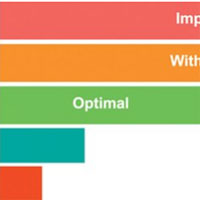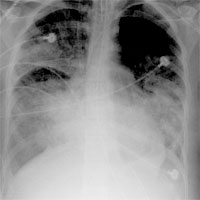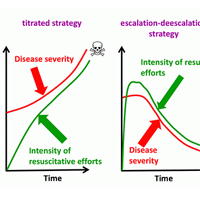Tag: strategy

Presentations from WSD Supporter Meeting at the World Congress of Intensive Care in Melbourne
On Wednesday, October 16th, 2019, World Sepsis Day Supporters from all around the globe came together at the World Congress of Intensive Care in Melbourne, Australia, for a World Sepsis Day Supporter Meeting. Simon Finfer,... read more

Effect of a Sepsis Educational Intervention on Hospital Stay
Adherence to a bundle strategy is low following an educational intervention. However, when patients are managed after instruction in guideline recommendations, hospital stay may be significantly reduced. The main cause... read more

Effect of a Low vs Intermediate Tidal Volume Strategy on Ventilator-Free Days in ICU Patients Without ARDS
In patients in the Intensive Care Unit (ICU) without acute respiratory distress syndrome (ARDS) who were expected not to be extubated within 24 hours of randomization, a low tidal volume strategy did not result in a greater... read more

Diaphragm-protective Mechanical Ventilation
Diaphragm dysfunction is common in mechanically ventilated patients and predisposes them to prolonged ventilator dependence and poor clinical outcomes. Mechanical ventilation is a major cause of diaphragm dysfunction in these... read more

Optimizing Continuous RRT in the ICU
The consideration of acute kidney injury, its incidence and its impact on the outcome of patients has grown continuously in recent years, leading to an increase in the use of renal replacement therapy (RRT) techniques. Recent... read more

Personalization of Arterial Pressure in the Perioperative Period
This review aims to discuss recent findings on the relationship between intraoperative arterial hypotension and organ dysfunction in surgical patients and examines the available evidence for personalizing blood pressure (BP)... read more

Time to Add a Fifth Pillar to Bedside Physical Examination
Inspection, palpation, percussion, and auscultation have been the 4 pillars of clinical bedside medicine. Although these basic methods of physical examination have served us well, traditional bedside examination, for a number... read more

Sleep Deprived-Patients in ICU May Fail to Get Off Ventilation
Attempts to wean intubated, critically ill patients off mechanical ventilators were less successful when the patients exhibited atypical sleep or pathological wakefulness, researchers reported. The findings suggest that sleep... read more

Effect of Titrating PEEP with Esophageal Pressure-Guided Strategy vs Empirical High PEEP-Fio2 Strategy on Death and Days Free From Mechanical Ventilation Among Patients With ARDS
Among patients with moderate to severe Acute Respiratory Distress Syndrome (ARDS), PES-guided positive end-expiratory pressure (PEEP), compared with empirical high PEEP-Fio2, resulted in no significant difference in death... read more

The Artificial Intelligence Clinician Learns Optimal Treatment Strategies for Sepsis in Intensive Care
Sepsis is the third leading cause of death worldwide and the main cause of mortality in hospitals but the best treatment strategy remains uncertain. In particular, evidence suggests that current practices in the administration... read more

Fluid Management in Acute Respiratory Distress Syndrome
In this video, Dr. Stacey Valentine discusses fluid management in acute respiratory distress syndrome (ARDS), including the evidence supporting fluid-restrictive strategies. Both acute lung injury and its more severe form,... read more

Metabolic Sepsis Resuscitation
There are roughly two strategies for adjusting the intensity of treatment: Titrated strategy: Treatment intensity is adjusted to match the severity of the disease. Escalation-deescalation strategy: Treatment intensity is... read more

EHR-guided Strategy Reduces Postop VTE Events
By incorporating algorithms into the electronic health record (EHR), UPMC was able to realize a "dramatic" 72% reduction in missed doses, from 4,331 missed doses in 2014 to 1,193 in 2015, Dr. Neal told attendees in a session... read more
We Should Avoid the Term “Fluid Overload”
Using the right word or phrase to describe a specific pathologic process/patient diagnosis and/or status is important, not only within the intensive care unit team, but also when we communicate with external consultants.... read more




